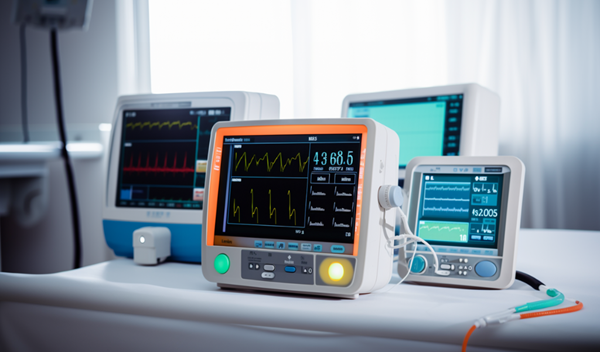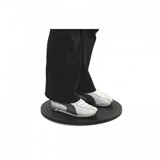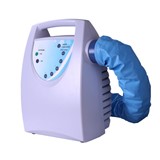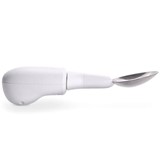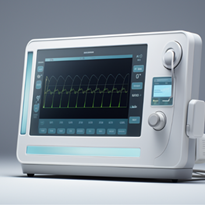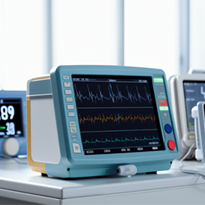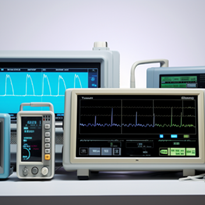Patient monitoring plays a critical role in healthcare settings, allowing medical professionals to continuously track vital signs and other essential parameters of patients. This real-time data enables early detection of any abnormalities, timely interventions, and ultimately enhances patient care. Selecting the right patient monitor is a crucial decision that requires careful consideration of various factors to ensure comprehensive and accurate monitoring. In this buying guide, we will provide valuable insights and expert recommendations to help you make an informed choice when it comes to patient monitors. The guide will maintain a professional and objective tone, presenting information in a clear, concise, and formal manner while avoiding any emotional language or promotional content. Let's begin by understanding the different types of patient monitors available in the market.
1. Understanding the Different Types of Patient Monitors
A. Vital Signs Monitors:
Vital signs monitors are essential tools for continuous observation of a patient's basic physiological parameters. These monitors are designed to measure and display key vital signs, including heart rate, blood pressure, respiratory rate, and temperature. By tracking these vital signs, healthcare providers can quickly identify any deviations from normal ranges and take prompt action when necessary. Vital signs monitors are particularly valuable for monitoring stable patients in general care settings.
B. Explanation of Vital Signs Monitoring:
Vital signs monitoring involves the regular assessment of crucial physiological parameters that indicate the overall health and well-being of a patient. Each vital sign provides valuable information about the patient's circulatory, respiratory, and metabolic status. For instance, heart rate reflects the number of heartbeats per minute, blood pressure measures the force exerted on blood vessel walls, respiratory rate indicates breathing frequency, and temperature indicates the body's thermoregulatory state. Continuous vital signs monitoring ensures early detection of any physiological changes, helping prevent adverse events and improving patient outcomes.
C. Key Parameters Monitored (e.g., Heart Rate, Blood Pressure, Respiratory Rate):
- Heart Rate: The number of heartbeats per minute (bpm) is a fundamental vital sign that indicates cardiac activity. A normal resting heart rate typically ranges from 60 to 100 bpm, but this may vary depending on factors such as age and physical condition.
- Blood Pressure: Blood pressure is measured in millimeters of mercury (mmHg) and consists of two values: systolic (higher value) and diastolic (lower value) pressure. Normal blood pressure for adults is around 120/80 mmHg, but it may differ based on individual characteristics and medical conditions.
- Respiratory Rate: Respiratory rate reflects the number of breaths taken per minute. The average adult respiratory rate is between 12 to 20 breaths per minute, but it may increase during physical exertion or in response to medical conditions.
- Temperature: Body temperature is a vital sign that indicates the body's ability to regulate heat. The average normal body temperature is approximately 98.6°F (37°C), but it may fluctuate slightly throughout the day.
D. Multiparameter Monitors:
Multiparameter monitors, also known as multi-parameter patient monitors, offer a comprehensive solution for monitoring several vital signs simultaneously. These monitors can track various parameters such as ECG (electrocardiogram), SpO2 (peripheral capillary oxygen saturation), invasive and non-invasive blood pressure, respiratory rate, and temperature. Multiparameter monitors are particularly valuable in critical care settings, where continuous and accurate monitoring of multiple parameters is essential.
E. Overview of Multiparameter Monitoring:
Multiparameter monitoring allows healthcare providers to obtain a more comprehensive view of a patient's physiological status in real-time. By consolidating multiple vital signs into a single monitor, medical professionals can efficiently assess a patient's condition, identify trends, and detect any signs of deterioration promptly. Multiparameter monitors are equipped with advanced technologies and sophisticated algorithms to ensure accuracy and reliability, making them an indispensable tool for high-acuity patient care.
In the subsequent sections of this buying guide, we will delve deeper into the considerations and features associated with both vital signs monitors and multiparameter monitors. By the end of this guide, you will be equipped with the knowledge needed to select the most suitable patient monitor for your specific healthcare environment and patient population.
2. Assessing the Monitoring Needs of Specific Patient Populations
A. Pediatrics and Neonatal Patients
Pediatric and neonatal patients require specialized monitoring due to their unique physiology and vulnerability. Their smaller size and developing systems necessitate careful observation and tailored medical devices.
B. Unique Monitoring Considerations for Children and Infants
Monitoring parameters for children and infants differ from adults. For example, heart rate, respiratory rate, and blood pressure ranges vary with age, requiring monitors with appropriate pediatric-specific settings.
C. Appropriate Monitors for Pediatric Care
When selecting patient monitors for pediatric care, it's crucial to opt for devices designed explicitly for these patients. These monitors should offer precise measurements and alarms suitable for young populations.
D. Geriatric Patients
Geriatric patients have distinct monitoring needs due to age-related changes in vital signs and health conditions. Proper monitoring can help detect issues early and enhance care for the elderly.
E. Specific Monitoring Requirements for Elderly Patients
Elderly patients may require continuous monitoring of parameters like heart rate, blood pressure, and oxygen saturation. Monitors should be capable of accommodating age-related variations.
F. Geriatric-Friendly Monitors and Features
Geriatric-friendly monitors should have user-friendly interfaces, clear displays, and adjustable font sizes. Intuitive alarms and comfortable attachments contribute to an effective monitoring experience.
G. Critical Care Patients
Patients in critical care settings demand constant and comprehensive monitoring. Critical care monitors should monitor various parameters simultaneously and provide real-time data for prompt intervention.
3. Key Features and Parameters to Consider in Patient Monitors
A. ECG Monitoring
Electrocardiogram (ECG) monitoring is essential for assessing heart health and detecting cardiac abnormalities. Proper ECG functionality is crucial for accurate heart rhythm analysis.
B. Importance of Electrocardiogram Monitoring
ECG monitoring plays a vital role in diagnosing heart conditions, guiding treatment decisions, and preventing life-threatening events, especially in high-risk patients.
C. ECG Features and Interpretation
Patient monitors should provide detailed ECG data, including waveform morphology and heart rate analysis, allowing healthcare professionals to make informed clinical decisions.
D. SpO2 Monitoring
Oxygen saturation (SpO2) monitoring assesses the amount of oxygen in the blood, a critical indicator of respiratory and circulatory function.
E. Significance of Oxygen Saturation Monitoring
Monitoring SpO2 levels helps identify respiratory issues, assess the effectiveness of oxygen therapy, and prevent hypoxemia-related complications.
F. Understanding SpO2 Measurement and Readings
Healthcare providers must understand how SpO2 is measured and interpret the readings accurately to avoid misdiagnosis or inadequate treatment.
G. Blood Pressure Monitoring
Blood pressure monitoring is fundamental for detecting hypertension and hypotension, guiding fluid management, and preventing adverse cardiovascular events.
H. Different Methods of Blood Pressure Measurement
Patient monitors may use oscillometric or invasive methods for blood pressure measurement, each with its advantages and limitations.
I. Accuracy and Reliability of BP Readings
The accuracy of blood pressure readings is crucial for making informed clinical decisions. Monitors should undergo regular calibration and maintenance to ensure reliable measurements.
J. Additional Parameters (Temperature, CO2, etc.)
Comprehensive patient monitors may include additional parameters like temperature and end-tidal carbon dioxide (CO2), providing a more complete view of the patient's condition.
K. Supplementary Parameters for Comprehensive Monitoring
These supplementary parameters offer valuable insights into the patient's respiratory status, metabolic activity, and overall well-being.
L. Integration of Additional Parameters in Monitors
Patient monitors should seamlessly integrate and display additional parameter data, enabling healthcare providers to monitor multiple aspects of the patient's health concurrently.
4. Examining Monitor Display and User Interface
A. Importance of User-Friendly Displays
- A user-friendly display is crucial for efficient patient monitoring.
- Clear and intuitive interfaces help healthcare professionals navigate the monitor effectively.
- Minimizes the risk of errors and enhances the overall user experience.
B. Impact on Patient Care and Monitoring Efficiency
- A well-designed user interface contributes to improved patient care outcomes.
- Quick access to vital data allows timely interventions and better decision-making.
Streamlines workflow, saving valuable time for healthcare providers.
C. Interpreting Monitor Data Effectively
- Accurate interpretation of monitor data is vital for patient assessment.
- Clinicians must be familiar with various parameters and their significance.
- Proper training ensures effective data analysis and appropriate actions.
D. Display Layout and Information Organization
- Thoughtful display layout presents information in a logical manner.
- Key parameters are prominently visible for quick reference.
- Organized presentation reduces cognitive load and enhances data assimilation.
E. Alarms and Alerts for Critical Situations
- Alarms play a crucial role in alerting healthcare providers to critical changes in a patient's condition.
- Customizable alarm settings prevent unnecessary alerts and alarm fatigue.
- Prompt response to alarms ensures timely intervention and patient safety.
VI. Connectivity and Integration with Hospital Information Systems (HIS)
A. Benefits of HIS Integration
- Integrating patient monitors with the Hospital Information System (HIS) offers numerous advantages.
- Seamless data transfer enhances communication and collaboration among healthcare teams.
- Comprehensive patient records become easily accessible, supporting continuity of care.
B. Streamlining Data Management and Accessibility
- HIS integration centralizes patient data, simplifying data management.
- Authorized personnel can access real-time patient information securely.
- Reduces paperwork and manual data entry, optimizing operational efficiency.
C. Compatibility and Interoperability Considerations
- Ensuring compatibility between the patient monitor and existing HIS is crucial.
- Interoperability allows smooth data exchange without data loss or format errors.
- Collaboration between monitor manufacturers and HIS vendors facilitates integration.
D. Ensuring Smooth Integration with Existing Systems
- Thorough testing is necessary to ensure a seamless integration process.
- Adequate training for healthcare staff on using the integrated system.
- Continuous technical support and updates for a stable and reliable setup.
6. Budgeting and Cost Analysis for Patient Monitor Purchase
A. Factors Affecting the Cost of Patient Monitors
Patient monitors are crucial medical devices that play a significant role in patient care. When considering the purchase of a patient monitor, several factors can influence the overall cost. Understanding these factors is essential for making an informed and cost-effective decision.
- Monitor Type and Capabilities: The type of patient monitor and its capabilities heavily impact the cost. Basic vital signs monitors are generally more affordable, while multiparameter monitors with advanced features command a higher price.
- Monitor Brand and Quality: Established brands and higher-quality monitors often come with a premium cost. While opting for reputable brands can ensure reliability, it's essential to balance quality and budget constraints.
- Parameters Monitored: The number and type of parameters the monitor can measure affect its cost. Monitors capable of tracking a wide range of parameters, such as ECG, SpO2, blood pressure, temperature, and CO2, tend to be more expensive.
B. Essential vs. Advanced Features
When budgeting for a patient monitor, it's crucial to evaluate the necessity of advanced features. While advanced features offer additional functionalities, they may not always be essential for every healthcare setting.
- Essential Features: Vital features like ECG, pulse oximetry (SpO2), and non-invasive blood pressure (NIBP) are considered fundamental and are typically found in basic patient monitors. These are must-have functions for routine patient monitoring.
- Advanced Features: Monitors equipped with features like invasive blood pressure monitoring, capnography, and arrhythmia detection provide more comprehensive data. However, it's essential to assess if these advanced features align with the specific needs of the healthcare facility and patient population.
C. Maintenance and Support Costs
The initial purchase cost of a patient monitor is just one aspect to consider; ongoing maintenance and support expenses should not be overlooked.
- Warranty and Service Contracts: Opting for monitors with extended warranties or service contracts can safeguard against unexpected repair costs and downtime.
- Training and Technical Support: Training healthcare staff on the proper use and maintenance of the patient monitor is vital. Some manufacturers offer training programs and readily accessible technical support, which may influence the overall cost.
D. Evaluating Return on Investment (ROI)
Assessing the ROI is a critical step in the budgeting process for patient monitors. While higher-priced monitors may offer advanced features, their long-term benefits should justify the initial investment.
- Enhanced Patient Care: Monitors with advanced capabilities may improve patient outcomes and reduce the risk of complications, leading to potential cost savings in the long run
- Durability and Longevity: Higher-quality patient monitors tend to have a longer lifespan and may require fewer replacements, reducing overall expenses over time.
E. Long-term Benefits of Quality Patient Monitors
Investing in quality patient monitors can yield several long-term benefits for healthcare facilities.
- Increased Efficiency: Advanced monitors with user-friendly interfaces enable healthcare providers to access and interpret data quickly, streamlining patient care processes.
- Data Integration: Some patient monitors can seamlessly integrate with hospital information systems, simplifying data management and enhancing the efficiency of healthcare delivery.
In conclusion, selecting the right patient monitor is a critical decision that directly impacts patient care and outcomes. This comprehensive buying guide has provided a structured approach to understanding the various types of patient monitors available, including vital signs monitors and multiparameter monitors. It delves into the significance of monitoring parameters such as ECG, SpO2, and blood pressure, offering insights into their measurement methods and clinical relevance. The guide emphasizes the importance of user-friendly displays and alarms for effective patient monitoring and highlights the benefits of integrating patient monitors with Hospital Information Systems (HIS) for streamlined data management.

